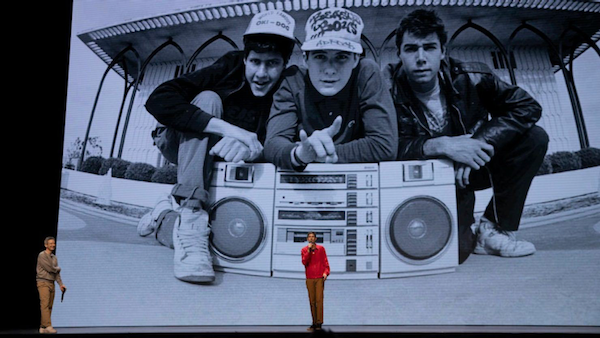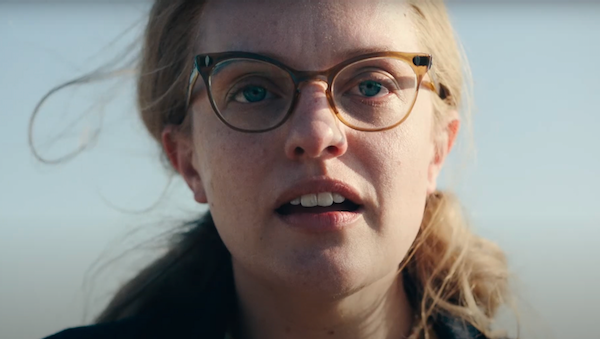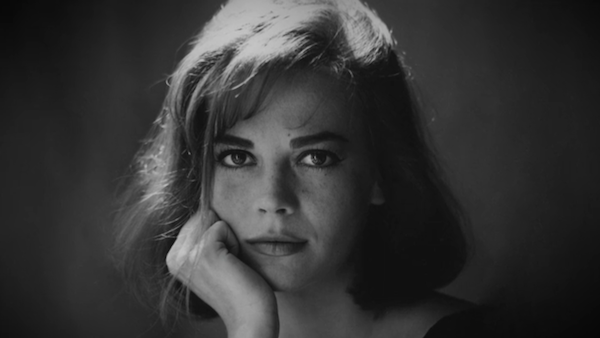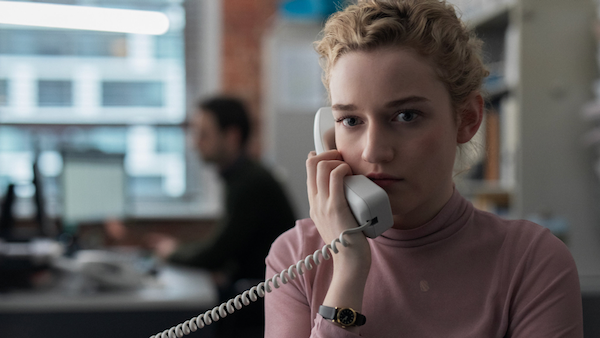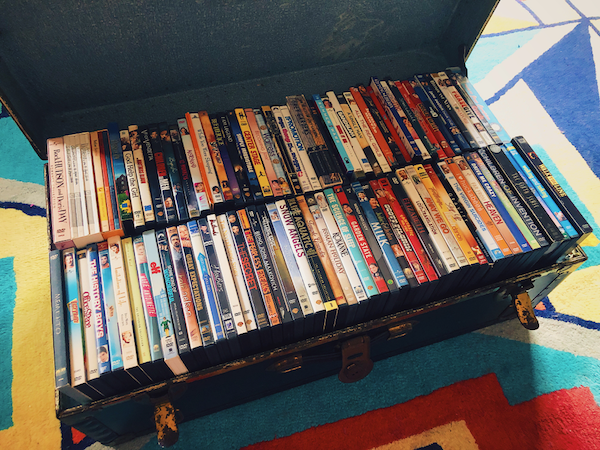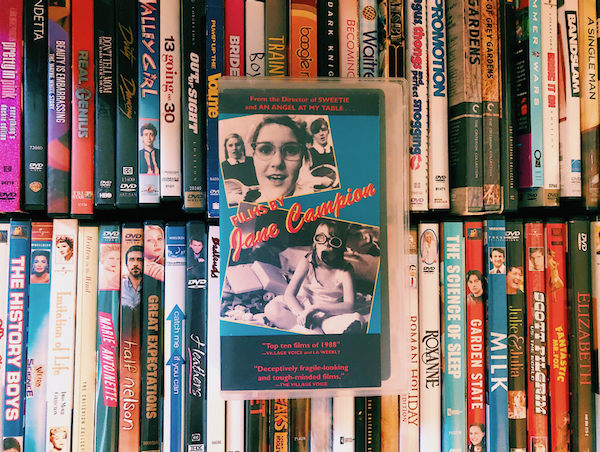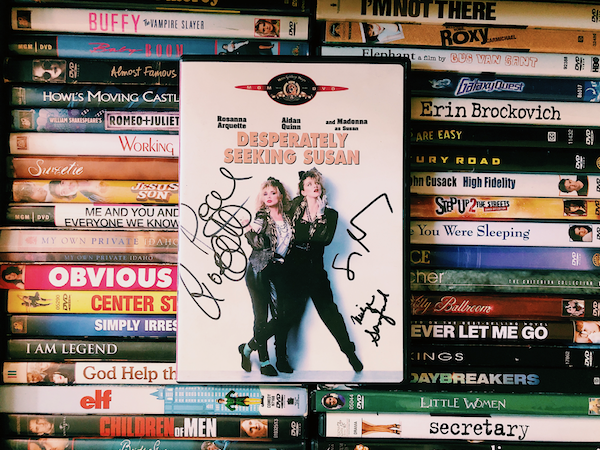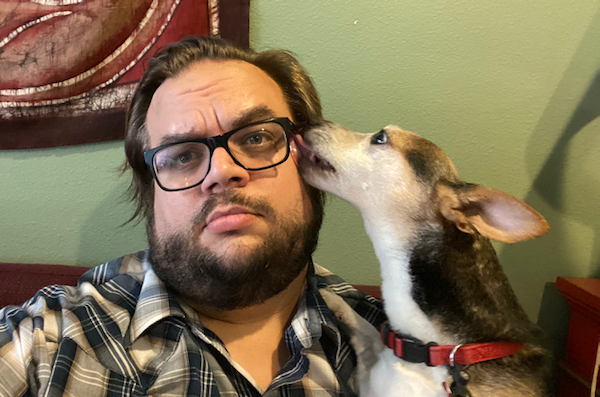
Interview by Greg Carlson
Brady Daley does UI/UX design, data visualization, and media production in Seattle, where he lives with his girlfriend Erika, dog Phinneas (Finn), and his girlfriend’s cat Annie, who hates him. He primarily collects horror but also rescues and archives special interest, conspiracy theory, and instructional titles he fears will be lost to time.
Greg Carlson: Erika worries she will find you crushed beneath the collection in your office. How do you keep your movies organized?
Brady Daley: I have one of those giant IKEA shelves and it is three layers deep right now. Before, I just used to have stacks of discs and tapes all around me. When quarantine happened, I thought, “I can’t work in my office,” so I reorganized. It was like playing the world’s worst game of Tetris.
GC: How do you keep track of titles?
BD: I did recently get an app where you scan the barcodes. I’m not done yet. I still have a hallway bookshelf and another closetful to do. I’ve got about 1400 DVDs and Blu-rays added so far. I haven’t counted the VHS yet.
I wish I kept everything alphabetical. I loosely organize by genre and director. I have a section for Frank Henenlotter. I have a section for David Lynch. I have a section for all the “Halloween” movies. It’s all over the place as far as organization goes.
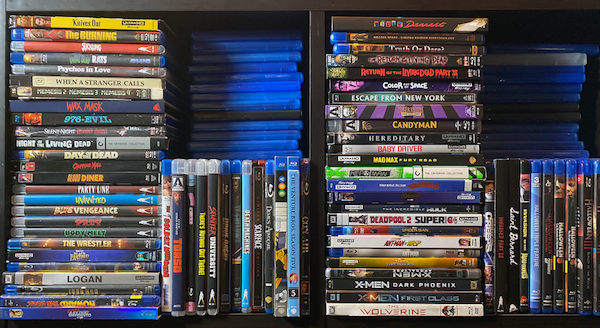
GC: Can you easily find any given movie?
BD: It’s weird, but yeah, I just know the location. They are like my children and I know where they are! If there’s something I want to watch, I can visualize it in, say, the third cubbyhole, second row back. It can also be fun to dig through and find more stuff. “Hey, I want to watch this too.” Adding to the watch stack can feel very Sisyphean. I go for one movie and come back with five.
GC: What’s your balance between picking up favorites versus blind-buys?
BD: I’ve started blind-buying a little bit more. I’ve been collecting nearly all my life. There’s lows and highs, based on when I can afford movies and when I can’t afford movies. Right now, I’m in a place where I can collect. A lot of the stuff I’ve been buying recently I used to rent long ago.
In East Grand Forks, North Dakota, there was a video store called Video East, and I’m pretty sure I watched every single horror and sci-fi movie they had, probably multiple times.
GC: Did they ever hassle you for being underage or did you get a pass?
BD: They did not care. I had no problems whatsoever.
GC: Were your folks ever concerned about the kind of stuff you were watching?
BD: Not really. The cool thing was that my mom worked at a grocery store in a nearby town, and they had a video rental section. She would bring me stuff. Employees could rent out one free tape a week.
I was around so often the owner would give me any VHS tapes and decks that weren’t working to see if I could make successful repairs. They got the widescreen version of “Blade Runner,” which I was so excited to see, but we couldn’t take out the newest tapes until they had been there for a few weeks, because they had to be available for the paying customers.
Somebody claimed that the “Blade Runner” tape was broken, so my mom brought it home for me to fix. At first, I thought, “Bummer, I really wanted to see that.” But the cassette looked tight, nothing amiss. I popped it in the VCR and watched the entire thing. After, I asked my mom what was wrong with the tape. She said, “Someone said there were black bars on the top and bottom of the screen.”
GC: The classic story repeated thousands of times at our nation’s video rental stores.
BD: Thank goodness that person was so dumb. Because I got to watch “Blade Runner.”
GC: You often tag filmmakers and distributors in your posts. I’m curious about the ways you use social media to interact with other collectors.
BD: That all revolves around my dog, Finn. I wanted to share pictures of Finn with my family and friends on Instagram. I spotted some VHS tape posts and stumbled into the world of collectors. I became friendly with a few of them, a really good group of folks. Whenever I went to Goodwill or to a garage sale, I shared a picture of what I found.
If somebody posted a picture of a tape I remembered seeing in the video store but never had a chance to rent, I wanted to track it down. I found my way to Vinegar Syndrome and Severin Films and Blue Underground — these labels that were becoming the Criterion Collection of genre movies. All these movies were being transferred to Blu-ray, and it was exciting. I love VHS, but it can be hard, and expensive, to track down certain titles.
I don’t like to go on eBay to buy something. I prefer the hunt, and finding something in the wild. I do trade with some of the Instagram collectors, which can be fun. Sometimes a person might throw in extras, or we’ll include little drawings and sketches.
It is fun to rediscover movies I saw as a kid but never thought I would see again. I was just talking to Brandon Opdahl about “Rad,” which never came out on DVD, but is being released on Blu-ray and 4K. It is so easy for some movies to get lost.
GC: Do you collect 4K as well?
BD: I collect the whole gamut of formats. I watch a lot of shot-on-video, made-on-the-cheap horror. Many of these filmmakers were passionate about what they were doing. But shooting on consumer-grade VHS cameras is going to look a certain way. So when you watch shot-on-video horror on Blu-ray, it can seem really weird, but also cool.
GC: What is your favorite bad movie?
BD: Romantically, you can’t do better than “Troll 2.” It was the first movie that Erika and I viewed together. We were talking about that movie at a bar, and she suggested we go and watch it.
GC: You knew she was going to be special.
BD: I have another one that I tell as many people about as possible: “Night Killer.” By the same director. It is bonkers. Released in Italy as “The Texas Chainsaw Massacre 3.” It has nothing to do with “The Texas Chainsaw Massacre” movies. The killer probably has more in common with Freddy Krueger.
Claudio Fragasso originally wanted to make the movie very tense, very serious. But the other producers wanted it to be more violent, so they brought in Bruno Mattei to punch up the gore. So what you end up with is an out-of-control story with weird shifts. I highly recommend it.
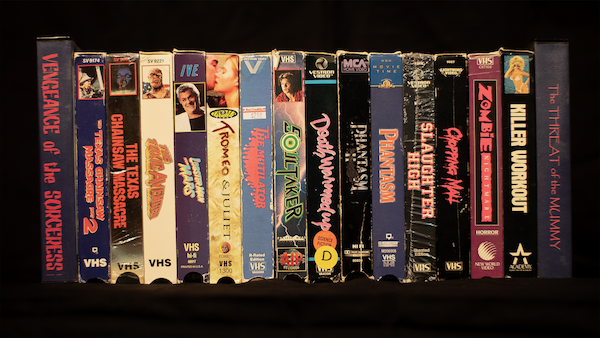
GC: Bates, Leatherface, Myers, Voorhees, or Krueger?
BD: Oh, the original Leatherface. Gunnar Hansen’s performance is underrated. In the later movies, Leatherface is depicted as another unstoppable behemoth. But in the first movie, he is almost like a victim of the family. They use him for muscle and treat him terribly. There’s a great shot where he sits down and the camera goes to his face. It’s really eerie and almost sad.
GC: What is the most re-watched movie in your collection?
BD: “The Texas Chainsaw Massacre 2.”
GC: Fantastic. Isn’t 1986 Dennis Hopper’s best movie year? The peak of the resurrection! Not only “The Texas Chainsaw Massacre 2,” but “Blue Velvet,” River’s Edge,” and “Hoosiers.”
BD: Yes, and I love Tobe Hooper. I love the original film so much. That’s one I have on VHS, DVD, and Blu-ray. Hopefully one day on 4K.
I adore the crazy, dark comedy. Tom Savini was involved in “Chainsaw 2” and he is one of the greats. I recently watched the Savini documentary on Shudder and learned so much about him that I didn’t know.
In “Maniac,” there is a scene where Savini plays a character in an alley with his girlfriend. Out of nowhere, Joe Spinell comes flying out with a shotgun and blasts Savini, whose head explodes.
GC: Like Bobby Peru!
BD: Savini talks about that “Maniac” scene in the documentary — no permit, real shotgun. Savini is unbelievably talented.
GC: Setting aside the Romero collaborations, the Savini design that I will never forget is the arrow through the mattress and then the neck of Kevin Bacon in the original “Friday the 13th.” So simple, yet so effective.
BD: I am always in awe of his ingenuity. Attention to detail without overcomplicating it.
GC: What do you love about horror?
BD: I grew up on horror. The first movies I saw on VHS were “Halloween” and “The Shining,” with my cousins. At one point during the screening, my Uncle Kent sneaked downstairs, where we had all the lights off, and jumped out to frighten us. We all just freaked out. That hooked me. I absolutely love being scared.
As time went on, I grew to enjoy more of the cerebral stuff, but I still have a soft spot for splatter and gore. Especially DIY and people working hard to do it because they love it. Tim Ritter makes low-budget, high-concept movies with great effects. I’m surprised he doesn’t work on bigger Hollywood projects, but maybe he just wants to do his own thing.
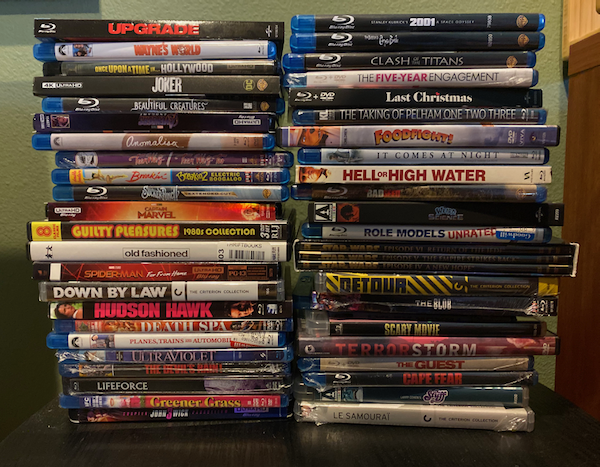
GC: Do you watch movies every day?
BD: I average about two movies a day. One of the benefits of quarantine is that I have been able to shrink the watch stack. Now it only comes up to my knee.
